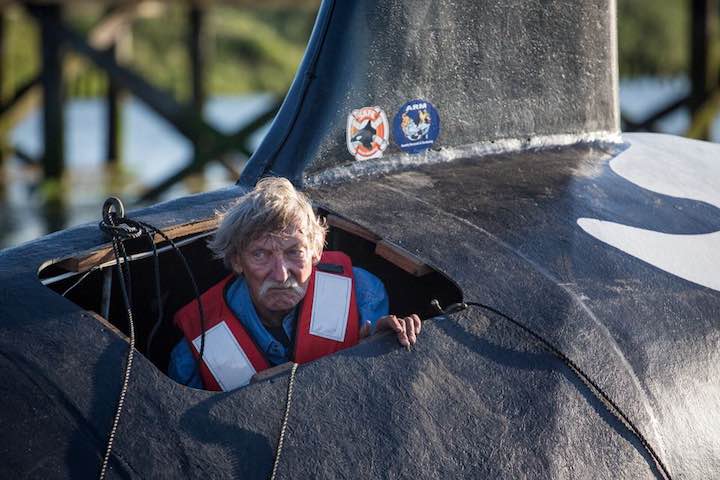forum
library
tutorial
contact

Hazing Sea Lions: Like the Sheep Dog
and Coyote Fable, But on Water
by Andrew Theen
The Oregonian, July 14, 2017
|
the film forum library tutorial contact |

|
Hazing Sea Lions: Like the Sheep Dog
by Andrew Theen
|
Jeffries said the current day struggle should not be a surprise. "I don't know that we learned any lessons," he said,
when asked how it compares to Ballard Locks. "We still have the same issues."
 It's no surprise to Steve Jeffries, a longtime Washington state Fish and Wildlife marine mammal specialist, that hazing sea lions at the Bonneville Dam has been largely ineffective.
It's no surprise to Steve Jeffries, a longtime Washington state Fish and Wildlife marine mammal specialist, that hazing sea lions at the Bonneville Dam has been largely ineffective.
In a 2017 report, the U.S. Army Corps of Engineers noted that the "non-lethal pyrotechnic deterrents" used at Bonneville were "limited" in their effectiveness. That effectiveness evaporates once the hazers leave and the animals take advantage.
Before Bonneville, where government officials have observed sea lions hanging out for the past 15 years to snack on steelhead and salmon, a handful of the marine mammals navigated through Puget Sound to Ballard Locks, the gateway to Lake Washington and a manmade roadblock for winter steelhead.
Protected from outright killing by a 1972 federal law, the sea lions began gorging on steelhead, driving the run to the brink of extinction in the 1980s.
Jeffries was there as every non-lethal technique to chase away the mammals was met with failure: Rubber buckshot, seal bombs, underwater M80s. The sea lions simply adapted and learned how to avoid danger.
When biologists lighted a fuse, the sea lions would swim out of reach. "They knew whether you had a good arm or not," Jeffries recalled.
State officials even tried scaring the sea lions with a fake orca, a tactic attempted in 2015 in Astoria which failed and made international headlines.
When asked if he was surprised the fake orca didn't fool the sea lions, Jeffries scoffed. "Do you respond to a fake dog?"
In response to the Ballard Locks situation, the government in 1994 approved a special exception to the Federal Marine Mammal Protection Act. It required Pacific Northwest states to follow a multi-step process before they could even apply for a permit to kill them.
The sea lions had to be trapped, identified, branded and observed on five days at Bonneville Dam. They then had to be confirmed eating salmon, then caught and transported for euthanizing. State biologists and tribal members contend the extended timeline gave sea lions an advantage on the Columbia and Willamette Rivers.
In between applying for the permits, officials would try to keep sea lions away from the dam through the same means used at Ballard Locks.
For the past decade, Oregon and Washington officials have learned the hard way that keeping sea lions away from salmon and steelhead is easier said than done.
Doug Hatch, senior fisheries specialist with the Columbia River Inter-Tribal Fish Commission, said the process is "cumbersome."
At least one-third of trapped animals must be released because they don't fit all the criteria, Hatch said. "There are some flaws in the system."
A bipartisan bill in Congress would speed up that process and give state and tribal officials broader authority to kill sea lions.
Congress is once again considering giving Oregon and Washington fish and wildlife officials and regional tribes broader authority to kill sea lions.
Under current law, the tribes can't kill sea lions, but they participate in the hazing.
Hatch described the exercise as similar to the classic cartoon with the sheep and the coyote, punching their time card for a day of work.
The sea lions recognize the boats. "They know who it is and they won't put their head out of the water," he said.
Jeffries said the current day struggle should not be a surprise. "I don't know that we learned any lessons," he said, when asked how it compares to Ballard Locks. "We still have the same issues."
Related Pages
Oregon, Washington and Tribes Again Take Aim at Sea Lions in Dispute Over Salmon by Andrew Theen, The Oregonian, 7/14/17
learn more on topics covered in the film
see the video
read the script
learn the songs
discussion forum
